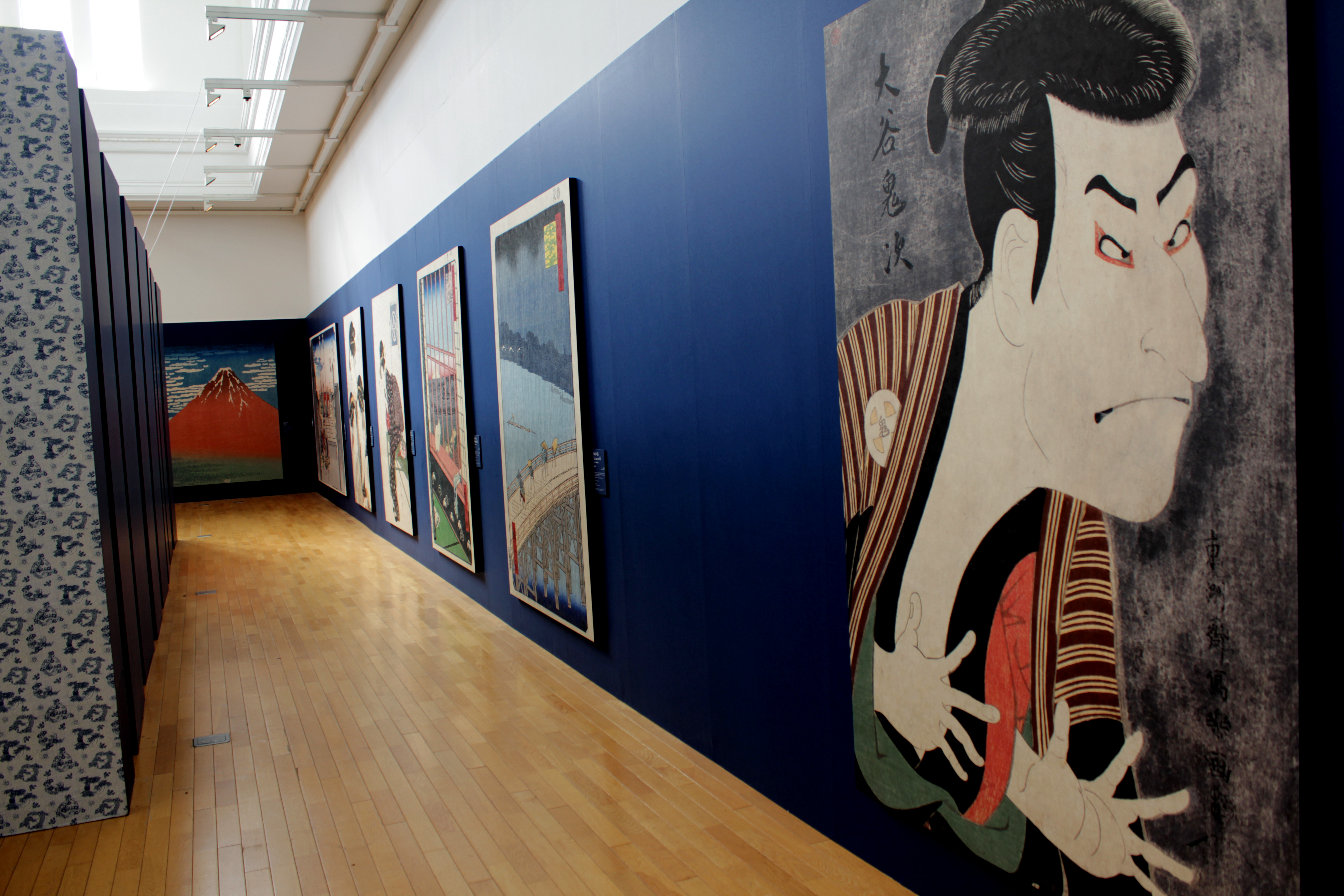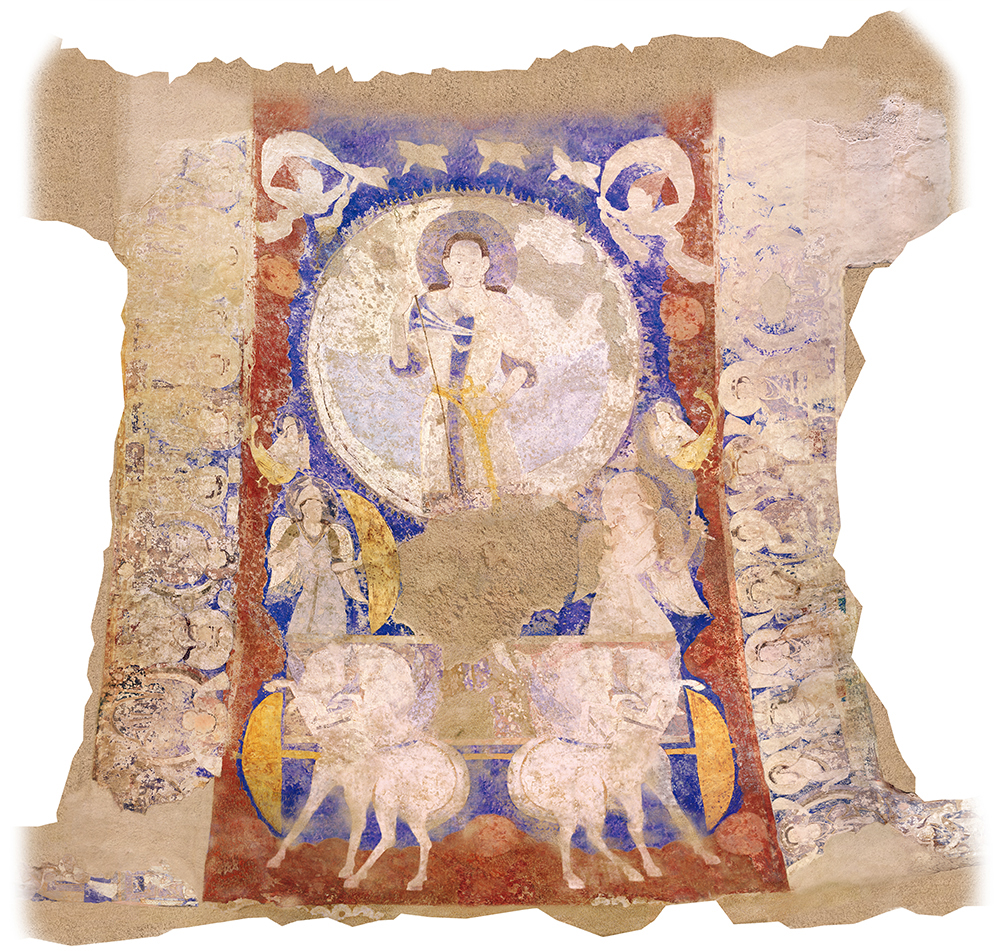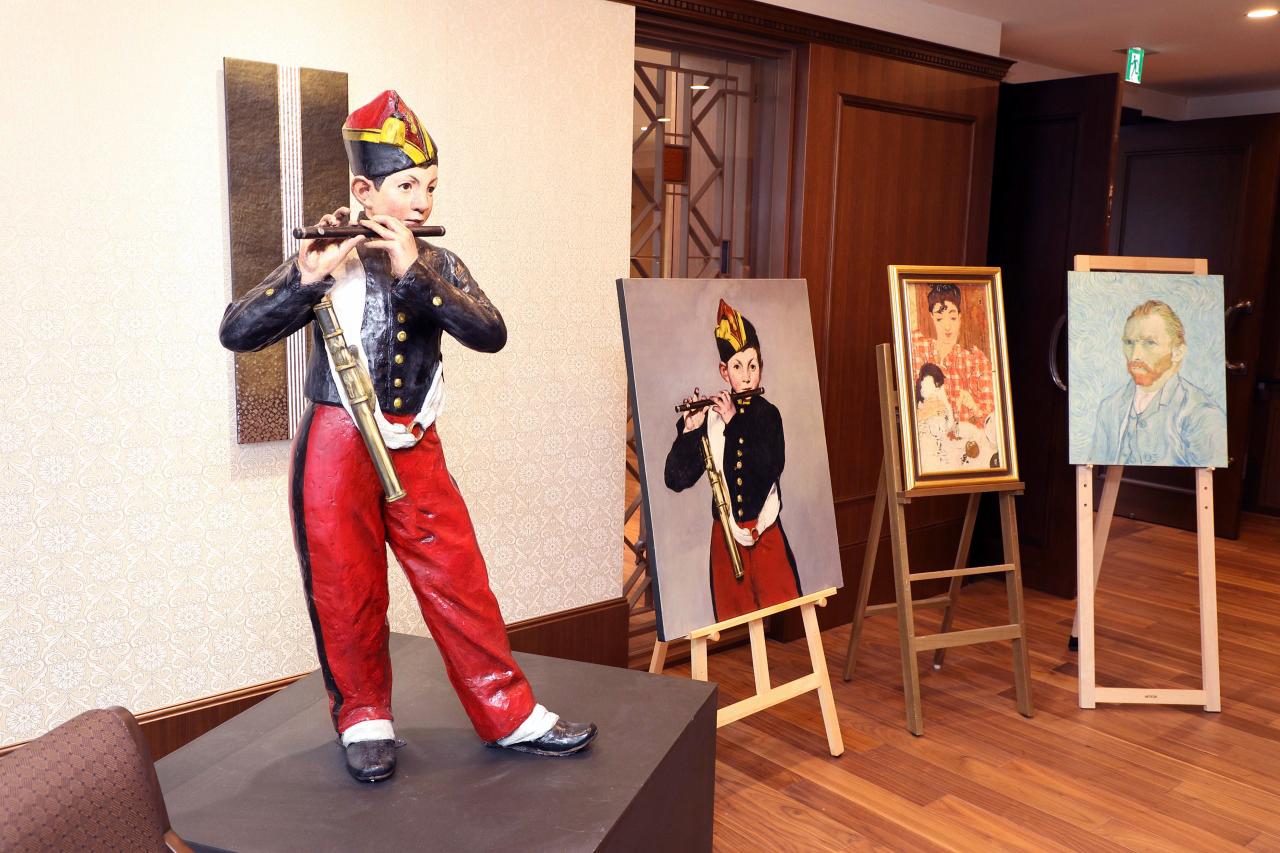Web Japan > Trends in Japan > Tech & Life > "Cloned Cultural Properties" - Masterpieces and Famous Paintings that You Can Touch
"Cloned Cultural Properties" - Masterpieces and Famous
Paintings that You Can Touch
The technology of dreams has been created; one that allows us to revive cultural assets lost in natural disasters and to directly touch cultural property that is normally stored under strict conditions due to its value.

3D Image of the oil painting "The Tower of Babel" by Bruegel the Elder (courtesy of Tokyo University of the Arts)
Reproduction is possible if there is photographic film
Using state-of-the-art science and technology, the art university in Tokyo has developed a technology that can accurately reproduce the composition and irregularities of painting materials and the artist's touch in paintings and sculptures, just like in the original works. For example, works of art can be reproduced based on photographic film, even if the real object no longer exists. The technology is named "Cloned Cultural Properties" from its precise finish; a technology that is drawing attention from all over the world as a means of significantly changing our cultural inheritance in the future.
To begin with, the contradiction of making cultural property available to the public while also preserving it, poses a challenge. In the sense that they are the property of mankind, it is important to make cultural assets available to the public in various locations to promote culture. However, no matter how careful we are, displaying cultural properties in public runs the risk of damage caused by transportation, lighting, air quality etc. In particular cultural property displayed outdoors is susceptible to the risk of damage caused by climatic conditions such as ultraviolet rays and the wind and rain, as well as the risk of man-made destruction and looting etc., resulting from conflicts and terrorism.
"Cloned Cultural Properties" is the result of research and development that has sought to provide a solution to such problems. A characteristic feature is that the technology can create works with the same texture and same materials as the original. It combines the traditional analog technique of reproduction with cutting-edge digital technology, such as modern high-definition photography and 2D & 3D printing, to restore works of art. This technology has reached amazing levels and has been patented by the university that developed the technique.
Reproduction of the Ceiling Mural from the Great Eastern Buddha of Bamiyan
Restoration work has begun on the ceiling mural from the Great Eastern Buddha of Bamiyan in central Afghanistan that was ruthlessly blown-up in the conflict; work that is based on a huge photograph previously shot by a Japanese research team. After importing data from the photograph into the computer and repeatedly adjusting the color, the image is printed on "washi" - a durable, fibrous paper unique to Japan. Then it is stuck onto a stone wall of foundations reproduced right down to their irregularities and texture; with digital technology playing an active role in this. Using data obtained from an image shot with a high-definition 3D digital camera, color tones are precisely quantified and calculations are made right down to the distortions in the mural wall, allowing the foundation to be formed and irregularities to be built up in minute detail. Without digital technology it would be impossible to restore to the original texture.

① Ceiling mural from the Great Eastern Buddha of Bamiyan photographed in the 1970s (courtesy of Tokyo University of the Arts)

② Data from the photograph is input to the computer and color tones are adjusted repeatedly; then it is printed on ultra-thin "washi" (courtesy of Tokyo University of the Arts)

③ Color of the ceiling mural from the Great Eastern Buddha of Bamiyan, an output at approximately 60% to scale (courtesy of Tokyo University of the Arts)
The Ukiyo-e "Cloned Cultural Properties" kept in the Spaulding Collection at the Museum of Fine Arts in Boston are also fantastic. A number of Ukiyo-e prints were donated on the condition that they not be displayed in public, and these maintain their original beauty as they have never been exhibited. This technology has allowed the Ukiyo-e prints, which are not suffering any deterioration in the paper or discoloration of the ink, to be reproduced as works of art that can be shown in public. The reproductions, which maintain the original vivid color as printed hundreds of years ago with the same texture washi as back then, can be viewed close-up and even touched. Vermeer's oil painting "Girl with a Pearl Earring" is also reproduced in great clarity, right down to the fine detail of the layers of paint and the momentum of the brush strokes.

Boston Museum of Fine Arts - Spaulding Collection's Ukiyo-e "Cloned Cultural Properties" (courtesy of Tokyo University of the Arts)

"Cloned cultural properties" (from left to right) : Manet's "The Fife Player"; Van Gogh's "The Church in Auvers" & "Self Portrait"; and Vermeer's "Girl with a Pearl Earring" (courtesy of Tokyo University of the Arts)
Manet's "The Fife Player" in 3D
Using 3D photographic technology, detailed data from 3D objects such as sculptures and Buddhist statues can be obtained without having to touch the objects, making it possible to restore valuable cultural assets without harming them. A mold is made based on the data collected and this is then used to create a statue. The final process produces a reproduction with attention to fine detail, right down to the colors faded with age and the distressed condition of the original.

① Photographic shots used to create the "Cloned Cultural Property" (courtesy of Tokyo University of the Arts)

③ Reproducing the Shaka Triad of the Horyuji Temple, which is cast in a mold based on the 3D print, and then painted (courtesy of Tokyo University of the Arts)

④ The finished reproduction of Horyuji Temple's Shaka Triad (courtesy of Tokyo University of the Arts)
One of the great points about the "Cloned Cultural Properties" technology is that not only can we produce the original work in its current state, but we can also trace back time to the form the work would have taken when first produced. As works can be reproduced with the same paint and paper as originally used, they can be returned to the condition they were in before they became faded with age. We can even see murals damaged by the sun, wind and rain in the same condition as they would have been when first painted on the stone walls. This is the same for paintings, sculptures and Buddhist statues alike.

After printing, art works are colored using analog technique of reproduction (courtesy of Tokyo University of the Arts)
Using this technology, we can also produce creative works derived from the originals such as a view of the back of Van Gogh's "Self Portrait"; a solid, 3D rendition, or 3D holographic video of Bruegel's painting the "Tower of Babel"; or a 3D statue based on Manet's painting the "The Fife Player". Eventually it should even be possible to have the statue of the "The Fife Player" play a song; to smell waves of the ripe sweet scent of the fruit in a still life painting; or to smell the fragrance of the cosmetics used by the beautiful women in the Ukiyo-e.
Replication, which was once looked down on as being counterfeit, has now discovered new value as the reproduction of cultural property in line with intended use. "Cloned cultural properties" will be helpful for educational use, tourism and diplomacy and will no doubt actively promote further art exchanges in the future.



